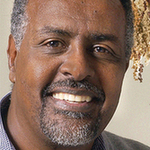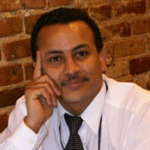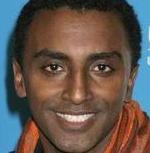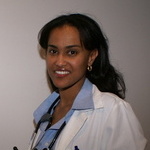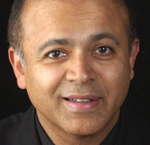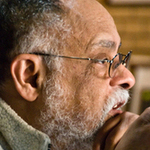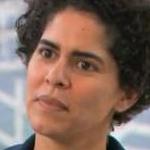Tadias Magazine
By Tseday Alehegn

Published: Tuesday, March 17, 2009.
New York (TADIAS) – Dr. Yared Tekabe enjoys doing most of his reflections while sitting anonymously with his laptop at cafés in Harlem. When he’s not there, Tekabe is busy running studies in cardiovascular disease detection and prevention at his lab in Columbia University’s William Black building in upper Manhattan. Last November, Tekabe’s groundbreaking work on non-invasive atherosclerosis detection and molecular imaging was published in the American Heart Association’s journal, Circulation, along with an editorial citing its clinical implications.
Dr Tekabe’s success has helped his laboratory, headed by Dr Lynne Johnson, to receive another $1.6 million four-year grant from the National Institute of Health to continue his research, and Tekabe hopes that in a few years time his work can help heart disease prevention efforts and early detection of atherosclerosis in humans.
“What is atherosclerosis in layman terms?” I ask him, trying hard to correctly pronounce this tongue twister. He breaks it down to its linguistic roots. “Atherosclerosis comes from the Greek roots athere which means gruel, and skleros which means hardness or hardening,” he explains. Further research in Wiki reveals that atherosclerosis is a condition affecting our arterial blood vessels, which transport blood from the heart to the rest of the body. Atherosclerosis is the chronic condition in which inflammation of the walls of our blood vessels lead to hardening of the arteries.
“Atherosclerosis is the underlying cause of cardiovascular disease (CVD),” Tekabe says. “The result is progressive closing of the blood vessels by fat and plaque deposits, which block and further restrict blood flow. In more serious cases it may also lead to clots in the aorta (main artery coming out of the heart) or carotids (arteries supplying blood to the brain) that may dislodge and travel to other parts of the body such as the brain, causing stroke. If the clot is in the leg, for example, it can lead to gangrene. Deposits of fat and inflammatory cells that build up in the walls of the coronary arteries (supplying blood to the heart muscle) can rupture leading to blood clots. Such clots in an artery that supplies blood to the heart muscle will suddenly close the artery and deprive the heart muscle of oxygen causing a heart attack. In the case of very sudden closure of an artery a clot can cause sudden cardiac death.”
“It’s the Tim Russert story,” Tekabe says, providing a recent example of what undetected levels of plaque formation in our bodies can lead to. EverydayHealth.com, an online consumer health portal, had described the famed former MSNBC ‘Meet the Press’ host’s sudden heart attack as being caused by a plaque rupture in a coronary artery. Russert had previously been diagnosed with heart disease, but his atherosclerosis was asymptomatic. He had not experienced the common signs of chest pain and other heart attack symptoms to warn him or his doctors of his true condition. The undetected inflammation in his vessels and the subsequent rupture of plaque led to his sudden heart attack and untimely death. This is not uncommon, however. According to the Centers for Disease Control and Prevention (CDC), heart disease “is the leading cause of death for both women and men in the United States, and women account for 51% of the total heart disease deaths.” There is even more grim news: United States data for 2004 has revealed that the first physical symptom of heart disease was heart attack and sudden death for about 65% of men and 47% of women with CVD.
The risk factors for atherosclerosis are well known and Tekabe runs through the list with me: “diabetes, obesity, stress, smoking, high blood pressure, family history of CVD, and diet” he says. “But of all the factors that I have mentioned, I would say diet is the most important one to change,” he adds. Food items such as red meat, butter, whole milk, cheese, ice cream, egg yolk, and those containing trans fat all put us at higher risk for plaque formation. The American Heart Association recommends eating fish such as salmon, herring and trout instead of red meat, as well as eating food that is steamed, boiled or baked instead of fried. It is better to use corn, canola, or olive oil instead of butter, and to eat more fiber (fruit, vegetables, and whole grain). Notwithstanding that March is deemed National Nutrition Month by the American Heart Association, changing our diet is largely emphasized in CVD prevention. We should also be exercising at least 30 minutes each day.
“Early non-invasive detection of the presence of inflammation and plaque could save lives,” Tekabe points out. “But the problem is two-fold: those who suffer from atherosclerosis do not display warning signs until it’s too late, and for doctors, a non-invasive method of detecting atherosclerosis is by and large not a possibility.” Research by Tekabe and others may soon change the way doctors can detect atherosclerosis.
Using molecular imaging techniques that were previously popular in cancer biology research, Tekabe and his colleagues have discovered non-invasive methods of detecting RAGE, a receptor first discovered in 1992 and thought to have causative implications in a host of chronic diseases ranging from diabetes to arthritis. Tekabe, collaborating with Dr Ann Marie Schmidt who has shown that RAGE receptors play a key role in atherosclerotic inflammatory response, notes that these receptors can be detected non-invasively in mice that have been fed a high-fat, high cholesterol diet.
“In the past, although we knew about the RAGE receptor, especially in the study of diabetes, we were not able to detect it without performing an autopsy of the lab mice. Clearly, in the case of humans it would be pointless if we said that we detected atherosclerosis in the patient after the patient had died,” Tekabe explains. “Therefore, it was imperative that our research showed a more non-invasive method, detecting RAGE receptors and locations of inflammation while the subject was still alive. The first step would be to test it on mice, which we have, and then perhaps on larger animals such as pigs, so that this research could be successfully translated to help non-invasively detect atherosclerosis in its early stages in human beings.”
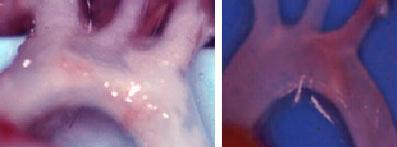
Left Image: Atherosclerotic aorta: The image is from a mouse fed a Western type of fat diet (high-fat, high cholesterol diet) for 34 weeks. It shows complete blockage of the aorta and the branches that supply the brain. The plaque is made up of fat and inflammatory cells.
Right Image: Relatively normal aorta: This is from 6 weeks old mouse fed a normal diet.
Tekabe’s recently published research showing detection of RAGE receptors responsible for arterial inflammation was funded by a grant from the American Society of Nuclear Cardiology as well as from an American Heart Association Heritage Foundation award.
The November Circulation editorial entitled “Feeling the RAGE in the Atherosclerotic Vessel Wall” highlights the significance of Tekabe et al’s findings and the necessity for early detection of atherosclerosis. “This is an exciting development that adds an important marker of atherosclerotic disease that can now be assessed non-invasively,” write Drs. Zahi Fayad and Esad Vucic. “Tekabe et al demonstrate, for the first time, the noninvasive specific detection of RAGE in the vessel wall.” They concur with Tekabe that “noninvasive detection of RAGE in the vessel wall could help define its role in plaque rupture, which has potentially important clinical implications.”
Tekabe came to Boston in 1990 and subsequently completed his Bachelor’s degree in Biotechnology and his Masters and PhD in Biomedical Sciences with a focus on CVD and drug development. His academic choices have inevitably led him to his career as a scientist, but he has personal reasons for choosing this path as well.
“I was born in Dire Dawa, Ethiopia. I have 1 brother and 8 sisters, and my parents had no formal education. But my father always encouraged me to seek higher education. While I was completing my studies I witnessed my beloved father suffer from Coronary Artery Disease (CAD) and he underwent triple bypass surgery. He passed away in 2004, and I promised myself that I would step up to the challenge of finding a way to prevent heart disease” Tekabe says in a somber and determined tone. “Heart disease is the leading cause of death in the developed world, and I am motivated by that challenge, but this research is also deeply personal.”
Tekabe hopes that his research will be applicable to other areas where RAGE receptors have been hypothesized to play a central role. Circulation editors who follow Tekabe’s work have noted that “in addition to its role in atherosclerosis and the development of vascular complications in diabetes, RAGE possesses wider implications in a variety of diseases, such as arthritis, cancer, liver disease, neurodegenerative disease, and sepsis, which underscores the importance of the ability of its noninvasive detection.” Tekabe, as part of Dr Ann Marie Schmidt’s team, has already filed U.S. and international patents and has plans to jump-start a drug development arm of the pharmaceutical industry in Ethiopia. “I’m looking for interested sponsors in Ethiopia who can see the potential of this research and its global implications,” he states.
Now that Forbes has apprised us of the billionaire status of an Ethiopian-born businessman, we hope this news may peak his interest in helping to start scientific research initiatives in Ethiopia.
—-
Join the conversation on Twitter and Facebook.
